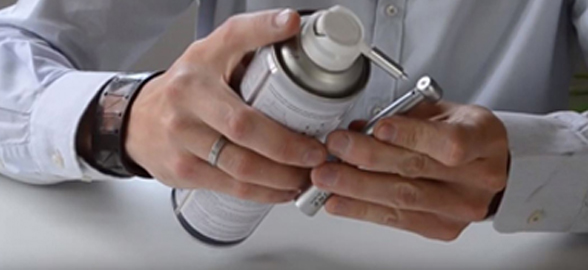In the practice of dentistry, tension, poor posture and stress can contribute to problems in the musculoskeletal system of staff. These disorders can differ in degree of severity from mild periodic symptoms to chronic debilitating conditions. In view of this situation, it is necessary for dental personnel to be aware of the risk factors to which they are exposed, their effects and protective and/or preventive measures.
WIRIST
The risk factors associated with dental work that most commonly affect the wrists are repetitive movements, awkward postures and stresses on the digital nerves when gripping vibrating instruments for a prolonged period of time, all this combined with insufficient work breaks. The safest position for the wrist is an upright or neutral position. Special care must be taken to avoid bending the wrist downwards (flexion) or outwards (ulnar deviation).
Carpal Tunnel Syndrome (CTS)
It is one of the most common problems affecting the hand and wrist. It occurs when the median nerve, which extends from the forearm to the hand, is pressed or squeezed. The median nerve provides sensation and movement to the thumb side of the hand. This includes the palm of the hand, the thumb, the index finger, the middle finger and the side of the ring finger on the thumb side (not the little finger).
The carpal tunnel is a narrow, rigid passageway of ligament and bone at the base of the hand. Thickening of irritated tendons or other inflammation narrows the tunnel and causes the median nerve to become compressed. The result can be pain, weakness or numbness in the hand and wrist, radiating down the arm. The exact amount and type of repetitive movements performed during dental work has not yet been quantified by previous studies. However, some researchers have shown that one of the predictive factors for the high prevalence of CTS among dental hygienists is in long clinical periods when repetitive movements are performed.
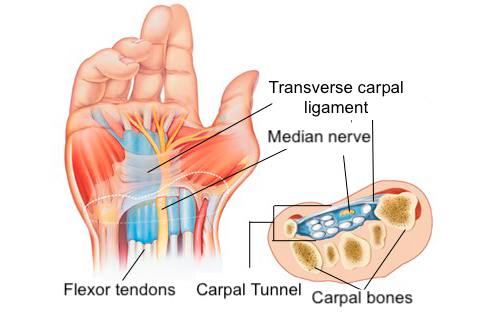
Wrist tendinitis
Tendinitis is an inflammation of the tendons, which are the structures that attach muscle to bone. Tendinitis of the wrist is accompanied by pain, swelling and inflammation in the side of the thumb, intensified by gripping and twisting activities.
Guyon's Syndrome
Guyon's canal is a space in the wrist between the pisiform bone and the hooked bone through which the ulnar artery and the ulnar nerve travel in the hand. Compression of the ulnar nerve occurs in this space at the base of the palm. It is commonly caused by repetitive bending of the wrist or excessive pressure on the palm of the hand. It is characterised by pain, weakness, numbness, tingling and burning in the little and ring fingers.

FINGERS
Gripping objects or instruments becomes a problem when carried out over long periods of time and with repetitive movements. The pressure can reduce blood flow and deformation of the fingers.
DeQuervain's Tenosynovitis
This disorder is characterised by pain and swelling in the wrist and thumb area when gripping, pinching, twisting, etc. Possible causes include synovial sheath inflammation, thickening of the tendons at the base of the thumb, and repeated trauma or twisting movements of the hand/wrist.
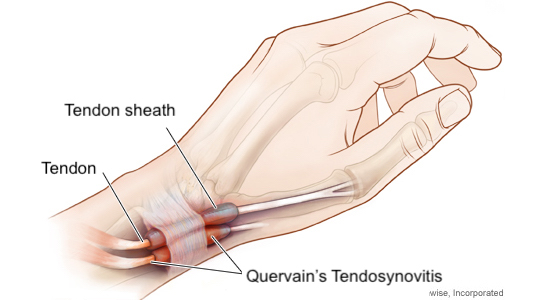
Trigger Finger
Stenosing tendosynovitis, commonly known as "trigger finger" or "trigger thumb", affects the tendons and pulleys in the hand that flex the fingers. The tendons work like long cords that connect the muscles of the forearm to the bones of the fingers and thumb. Pain occurs during movement that places the tendons under tension in the "firing" position.
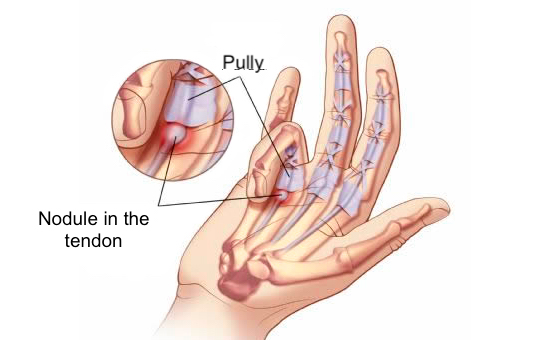
CODOS
The elbow should generally be kept at a right angle or ninety degrees. Because the blood vessels and nerves that innervate the path of the forearm and hand along the elbow with repeated or prolonged flexion can cause compression, leading to elbow pain.
Epicondylitis or tennis elbow
Elbow injuries typically occur either on the inside of the elbow, which is referred to as medial epicondylitis (golfer's elbow), or on the outside of the elbow, known as lateral epicondylitis (tennis elbow). The flexors of the forearm, which is used to make a fist, attach to the inside of the elbow. While the forearm extensors, which is used to open the hand, connect on the outside of the elbow.
![]()
Cubital Tunnel Syndrome
Cubital tunnel syndrome is often caused by prolonged use of the flexed elbow, resting the elbow on an armrest, overuse can compress the ulnar nerve. It is characterised by pain, numbness, tingling and sensation problems in the little and ring fingers, lateral and back of the hand, loss of control and reduced grip strength.
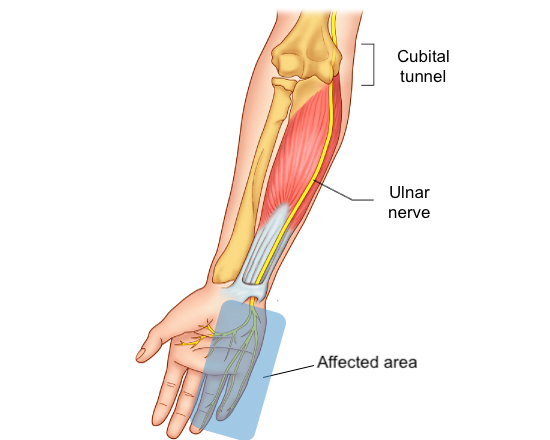
UPPER BACK
Shoulder rounding can compress the nerves, arteries and veins supplying the arm and hand, leading to upper extremity symptoms. Thoracic malalignment also limits oxygen consumption. Bowing forward compresses the chest cavity. When oxygen decreases, the body experiences fatigue and loss of concentration.
Bursitis
The term bursitis means that the part of the shoulder called the bursa becomes inflamed. There are many different problems that can lead to symptoms of bursa inflammation, one of which is being impingement.
Thoracic Outlet Syndrome (TOS)
TOS is a condition resulting from compression of the nerves, arteries and veins as they pass through the neck to the arm (thoracic outlet). Possible causes include tight scalene and pectoralis muscles, extra cervical rib, and prolonged durations of working with elbows elevated. This disorder is characterised by pain in the neck, shoulder, arm or hand, numbness and tingling of the fingers, muscle weakness/fatigue and cold sensation in the arm, hand or fingers.

Rotator cuff tear
The rotator cuff (RC) is a group of 4 muscles: supraspinatus, infraspinatus, teres minor and subscapularis. The RC assists in both gross and fine motor control of the arm.
Rotator cuff tendonitis
This disorder is characterised by pain and stiffness in the shoulder associated with backward and upward arm movements, and weakness of the rotator cuff muscles. Possible causes include swelling or tearing of the soft tissues of the rotator cuff, shoulder joint bone spurs/abnormalities, and poor shoulder posture.
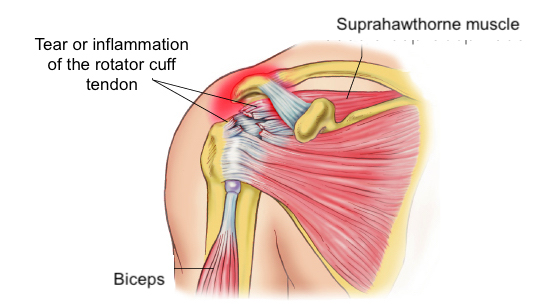
LOWER BACK
The main risk factors associated with dental work are those sustained with awkward postures. Most people with low back pain suffer from it gradually over time. Postures over the years begin to add up and cause slow degeneration of various parts of the spine, resulting in low back pain.
Disc problems
In a sitting posture the pressure on the lumbar discs is increased by 50% compared to standing. Additionally, sitting in an unsupported posture can cause double the amount of stress compared to standing. During flexion (forward bending) and twisting (rotation) movements of the spine, the pressure on the lumbar discs increases by 200%. This type of pressure on the disc can result in a bulge or herniation, causing compression on a spinal nerve.
Sciatica
Sciatica is characterised by pain in the lower back or hip that radiates to the buttocks and legs, causing leg weakness, numbness or tingling. It is commonly caused by bulging, prolapsed or herniated compression discs from a spinal nerve root and is worsened by prolonged sitting or excessive bending and lifting.
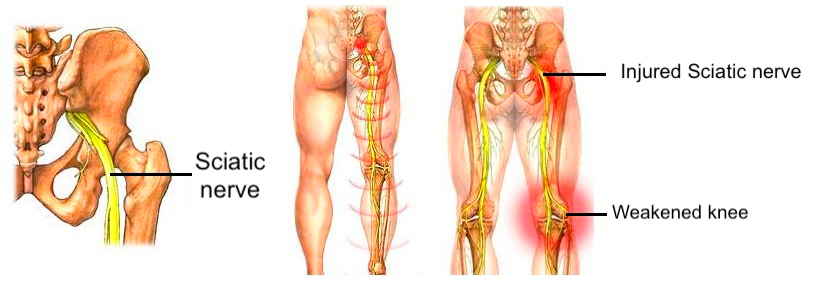
NECK
Pain and discomfort are the most common complaints reported in the neck/shoulder region among dental professionals. Studies have also shown that women reported neck symptoms 1.4 times more often than men. It is common for arm and hand pains that lead to neck problems. Neck and arm strain can be prevented by keeping the head and neck in proper alignment.
The slight inward curve of the neck balances the head on the spine, the forward head disturbs this balance, the joints and muscles of the neck and upper back. This posture also causes compression of the nerves and blood vessels leaving the neck, leading to arm and hand symptoms. Neck problems are usually due to prolonged bending of the neck in a static manner, lack of upper limb support and improper posture have a significant influence and awkward postures are often adopted to obtain better views of the patient's intraoral cavity.
Myofascial Pain Disorder (MPD)
MPD is characterised by pain and tenderness in the neck, shoulder, arm muscles, and a restricted range of motion. A possible consequence is the feeling of neck and shoulder overload.
Cervical spondylosis
This disorder is characterised by intermittent or chronic pain in the neck and shoulder pain or stiffness, pain in the head, hand and arm, numbness, tingling, and feeling of clumsiness of movement. Causes include age-related degeneration of the spinal disc, which leads to nerve compression and spinal cord damage, arthritis, as well as time spent with the neck in awkward postures.
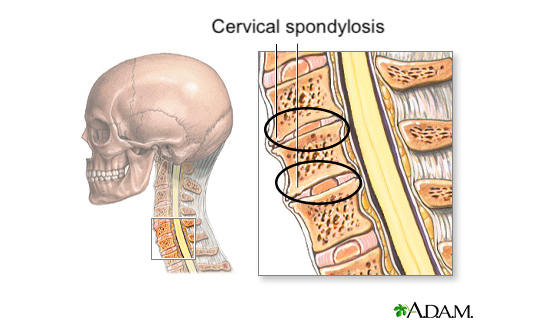
With this post we end the last part of ergonomics Did you find it interesting? Share it! :)





